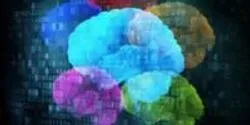News

A team of New York University and University of Barcelona physicists has developed a method to control the movements occurring within magnetic materials, which are used to store and carry information. The breakthrough could simultaneously bolster information processing while reducing the energy necessary to do so.

A couple of years ago a scientist looking at dozens of MRI scans of human brains noticed something surprising. A large, fiber pathway that seemed to be part of the network of connections that process visual information showed up on the scans, but the researcher couldn’t find it mentioned in any of the modern-day anatomy textbooks he had.

We’re entering the era of big neuroscience. In a little over a year, the United States, Europe, Japan and Israel have launched brain research projects with big budgets and bold ambitions. Several other countries are expected to follow suit. But what has propelled neuroscience to the vanguard, and what impact will these initiatives have on the field?

A novel looping mechanism that involves the end caps of DNA may help explain the aging of cells and how they initiate and transmit disease, according to new research from UT Southwestern Medical Center cell biologists.

Since the 1850s scientists have known that crystalline materials are organized into 14 different basic lattice structures. However, a team of researchers from Vanderbilt University and Oak Ridge National Laboratory (ORNL) now reports that it has discovered an entirely new form of crystalline order that simultaneously exhibits both crystal and polycrystalline properties, which they describe as “interlaced crystals.”
















